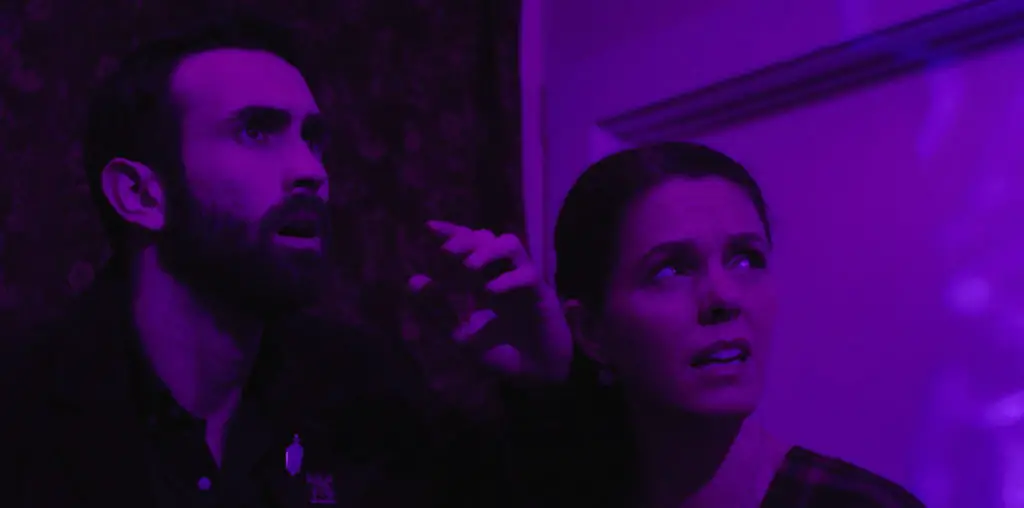
Since the release of his 2000 action-thriller “Time and Tide,” Hong Kong cinema icon Tsui Hark has only directed two films of debatable achievement: “The Legend of Zu” (2001) and “The Black Mask 2: City of Masks” (2002). His highly anticipated comeback film, “Seven Swords,” suggests that having approximately two decades of experience in directing, writing, and producing martial arts films is both a blessing and a curse. Hark is familiar with the technical, aesthetic, and narrative conventions of the genre; therefore, given that the presentation of these elements has been honed with each successive film, there’s pressure to maintain or outdo that formula. Sadly, in this case, efforts to embrace a new visual design result in a wuxia film that could only be genuinely appreciated when considered in relation to its source material or from a political reading of the text.
Filmed on location in China’s Xinjiang province and adapted from Liang Yu-Sheng’s novel Seven Swordsmen from Mountain Tian, “Seven Swords” is set in the Qing Dynasty (1644-1911), not to be confused with the Qin Dynasty (221 B.C. – 206 B.C.). The Emperor has outlawed the practice of martial arts; whoever disobeys the edict will be beheaded. A military official named Fire-Wind (Sun Hong-Lei) and his band of merciless “soldiers” make it their mission to destroy Martial Village, the last hotbed of peasant rebellion. The only hope these people have against annihilation turn out to be the Seven Swordsmen—two of which are fellow villagers, Wu Yuanyin (Charlie Yeung) and Han Zhiban (Lu Yi).
Forged by Master Shadow-Glow (Ma Jing-Wu), who went into seclusion inside Mount Heaven, each sword is unique to the skills and abilities of its owner. YuanYin wields the double-bladed Heaven’s Fall Sword and spends much of her screen-time figuring out how to use it; Han is given the Diety Sword and is one of two characters with a love interest; Chu Zaonan (Donnie Yen) expertly handles the Dragon Sword and was once a Korean a slave; Mulang (Duncan Chow) slices through air with the Celestial Beam Sword; lupine-raised Xin Longzhi (Tai Li-Wu) cuts with the Star-Chasers Sword; vengeance-motivated Yang Yunchong (Leon Lai) commands the Transience Sword; and Fu Qinzhu (Liu Jia-Liang) is assigned the Unlearned Sword because he needs to forget his past—being a minister of punishment in the previous dynasty. Fighting in unison, they show Fire-Wind that Martial Village’s resistance will not be so easily extinguished.
Aside from keeping track of plot details as they unfold, you will wonder if Tsui Hark is trying to delve into American sci-fi/fantasy aesthetics with the costumes and sets. Zhang Yimou’s “Hero” might have been beautiful to the point of surrealism, but “Seven Swords” is “different” to the point of anachronism—which is not desirable. Much like the costume and set design of Corey Yuen and Patrick Leung’s “Twins Effect 2,” the wardrobe and art design of Hark’s film are a bizarre hodgepodge of various cultures and historical times. The characters in “Seven Swords” wear Chinese-Mongolian-Japanese-Roman clothes and live in a landscape that features an outpost ostensibly inspired by pseudo-Tibetan-Indian architecture. The story is rooted in a specific time period, so the disconnect between what clothing and buildings in the Qing Dynasty should’ve looked and what they do look like in “Seven Swords” is too much. It’s not escapism anymore—it’s ludicrousness.
Fortunately, the cast manages not to look uncomfortable or self-conscious in their garb. They own up to the pastiche-style and give performances Hark melds into drama and great action sequences. Leon Lai, Charlie Yeung, Donnie Yen, and Liu Jia-Liang (for those old enough to know him) are the most recognizable, but none of the other swordsmen blend into the background, which may have something to do with the color schemes. The film’s beginning indicates that Hark is effectively experimenting with colors. The red-against-ashen-gray is intriguing, stimulating curiosity as to how the rest of the film will look. You’ll believe that Hark is moving away from his characteristic theatrical lighting design and going for something a bit more Zhang Yimou—especially in one scene where the Seven Swordsmen are in the midst of trees of yellow foliage. You would be wrong. The moment Fire-Wind invades Martial Village, the blues, yellows, and oranges appear. Hark appears to be re-inventing his artistic mentality while wearing an old thinking cap.
I really wanted to like “Seven Swords”—even more so than “The House of Flying Daggers.” But, it just didn’t happen. The plot isn’t any harder to follow than any other wuxia film, particularly when there are two sources of conflict (who’s the traitor in Martial Village? Can Fire-Wind be stopped?), but it isn’t any more compelling either. If I were to tackle a political reading, I would theorize that “Seven Swords” is about the re-imagining of China… not as an ethnically or socially homogenous land, but rather as a site of diverse cultural exchange. The other question, though, is whether this subtext is satirical or not. I support the idea of making action/adventure and martial arts films for reasons beyond superficial entertainment, but every now and then, I’d like to watch a movie that could give me thrills, an engaging story, and not force me to think actively about ideology in order to enjoy it.
